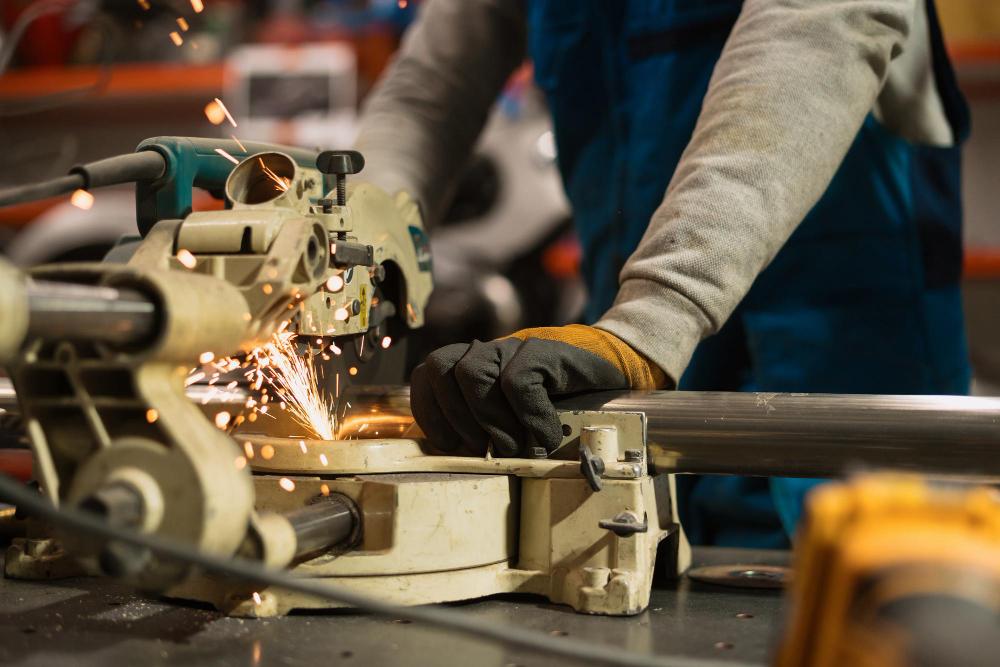
From the dawn of civilization, the mastery of metal has been a cornerstone of human progress, shaping our tools, shelters, and artistic expressions. Early humans, discovering the malleability of copper and later the strength of iron, began a journey that would fundamentally alter the course of history. This ancient craft, initially practiced by local blacksmiths, laid the groundwork for sophisticated industries. The ability to transform raw ore into durable, functional, and often beautiful objects was nothing short of revolutionary, providing the very foundations upon which societies could build and innovate. It’s a legacy that continues to evolve, constantly pushing the boundaries of what is possible with these remarkable materials.
The evolution of metalworking techniques mirrors humanity's ingenuity. From rudimentary hammering and heating, methods advanced to include casting, forging, and later, precision machining. Each development brought new capabilities, allowing for the creation of more complex structures and intricate designs. This blend of artistry and scientific understanding has always been at the heart of the craft. As materials science progressed, so too did our capacity to manipulate metals, leading to alloys with enhanced properties—stronger, lighter, more resistant to corrosion. This continuous innovation ensures that metalworking remains a dynamic field, with new applications constantly emerging to meet modern demands.
Today, the field of metalworking stands at the fascinating intersection of age-old traditions and cutting-edge technology. While the fundamental principles of shaping and joining metal remain, the tools and techniques have been revolutionized. The demand for specialized skills, whether for intricate custom iron and steel fabrication or robust industrial applications, is as high as ever. Companies like Northeast Iron Works exemplify this blend, offering services that range from bespoke artistic pieces to critical structural components. Their expertise ensures that the legacy of metalworking continues to contribute significantly to our built environment, fostering both functionality and aesthetic appeal in countless projects across various sectors.
The historical journey of metal has always been about problem-solving and creation. From agricultural tools that fed growing populations to the armaments that defended nations, and the architectural marvels that defined eras, metal has been indispensable. This deep-rooted history provides a rich context for understanding the enduring relevance of metalworking today. Whether it’s a modern structural steel welding company building skyscrapers or a craftsman specializing in decorative iron works contractors, the spirit of innovation and dedication to quality remains a constant thread throughout this extensive and fascinating narrative, continuing to inspire new generations of artisans and engineers alike.
The interplay between traditional craftsmanship and modern industrial processes presents a compelling dynamic in contemporary metalworking. While large-scale manufacturing benefits from automation, the unique value of a custom iron design and build cannot be overstated. This niche requires an understanding of both material properties and aesthetic vision, allowing for truly bespoke solutions that are often impossible to replicate through mass production. It's in this space that the artisan's touch, combined with precision engineering, brings complex ideas to tangible reality, ensuring each piece is not just functional but also a work of art.
Technology has profoundly enhanced the capabilities of metal fabrication, moving beyond manual methods to embrace computer-aided design (CAD) and computer numerical control (CNC) machining. This shift has allowed for unparalleled accuracy and consistency, transforming what a precision steel fabrication shop can achieve. While these tools streamline production and reduce error, they do not diminish the need for skilled operators. Instead, they empower craftsmen to execute designs with incredible fidelity, pushing the boundaries of complexity and scale. The human element of expertise in programming, setup, and quality control remains indispensable, merging digital precision with practical know-how.
The integrity of metal structures, particularly in construction, hinges on expert application of techniques like welding. A structural steel welding company plays a crucial role in ensuring the safety and longevity of buildings, bridges, and other infrastructure. This isn't merely about joining two pieces of metal; it involves a deep understanding of metallurgy, load-bearing capacities, and environmental stresses. The engineering principles behind robust welding are critical, demanding rigorous standards and certified professionals. The reliability of these connections directly impacts the overall strength and durability of the finished project, highlighting the serious responsibility involved.
Metalworking often bridges the gap between purely utilitarian function and artistic expression. From the robust, load-bearing beams of a building to the intricate patterns of a wrought-iron gate, metal serves both practical and aesthetic purposes. Decorative iron works contractors specialize in transforming raw metal into captivating features that enhance architectural beauty, demonstrating that functionality doesn't preclude elegance. This dual nature allows metal to be an integral part of both industrial landscapes and personal spaces, offering solutions that are not only strong and durable but also visually engaging and reflective of unique design sensibilities.
The ongoing need for maintenance and repair services underscores the value and longevity inherent in metal products. Welding and repair services are essential for extending the lifespan of existing metal structures, machinery, and components, promoting sustainability and resource efficiency. Instead of discarding and replacing, skilled repair can restore items to their original strength and functionality, often at a fraction of the cost and environmental impact of new fabrication. This aspect of metalworking is vital for both industrial operations, where machinery downtime can be costly, and for residential applications, preserving valuable or sentimental pieces.
The breadth of metalworking applications is truly vast, touching almost every aspect of modern life. From residential iron fabrication for gates, railings, and security features that enhance homes, to extensive industrial steel works services for heavy manufacturing, power generation, and transportation infrastructure. This versatility highlights the material's adaptability and the diverse expertise required within the industry. Whether it’s a local project requiring a northeast iron works near me for quick, reliable service or a large-scale industrial undertaking, the foundational principles of working with metal are applied across a spectrum of needs, demonstrating its universal utility.
Comments